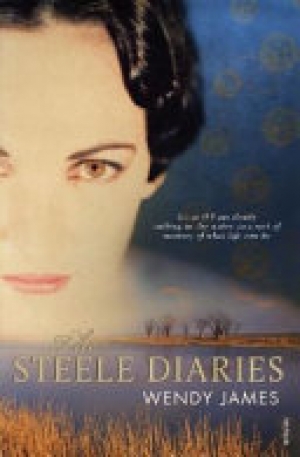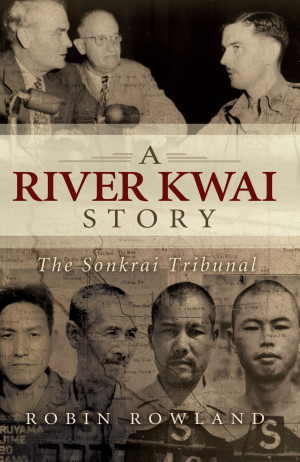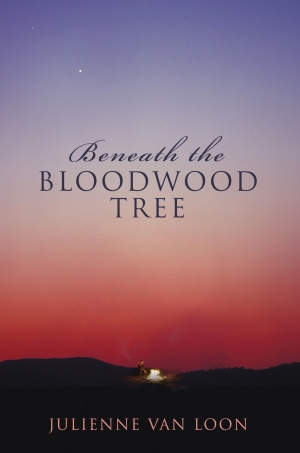Archive
David McCooey reviews 'The Australian Popular Songbook' by Alan Wearne
Having spent two decades or more writing massive verse novels – The Nightmarkets (1986) and The Lovemakers (2001, 2004) – it may seem that Alan Wearne, with his latest book of poetry, The Australian Popular Songbook, has finally returned to smaller forms and, as suggested by the title, a more lyrical idiom. But, as always with Wearne’s work, things aren’t that simple. The smaller forms were already present in the verse novels in the form of sonnets, villanelles and other verse forms buried in the sprawling architecture of the works’ narratives. The ‘lyrical idiom’ of The Australian Popular Songbook is ambiguous at best, offset as it is by Wearne’s characteristic attraction to the dramatic monologue, satire, vernacular culture and wrenched syntax.
... (read more)This is a novel about a mother, daughter, and granddaughter. Two of these women are artists, and the third is a medical practitioner. Wendy James explores creativity and the price it exacts, especially if the artist is a woman. James is also interested in biography, its limitations and potentially destructive effects. The title, The Steele Diaries, refers to the journals of a celebrated book-illustrator, Zelda Steele. In the 1960s, Zelda is a young mother of two, temporarily living separately from her husband when, mysteriously, she dies by drowning in the local river. This occurs just as she is fulfilling her potential as an artist. The main narrative is a first-person account by Zelda’s (now adult) daughter, Ruth, a doctor who has spent her life resenting her famous mother and modelling herself on her beloved father, Richard, the respected GP of an outback country town. Ruth’s inner journey towards an adult understanding of her mother and, thence, herself provides the central narrative. The trajectory begins immediately after her father’s death in the late 1990s, when Ruth is contacted by Douglas Grant, an international art critic and biographer of her long dead grandmother, modernist landscape painter Annie Steele. Annie was the first wife of painter Ed Steele, Australia’s most famous modernist artist. Douglas Grant, a lover of Zelda’s when they were young, is aware that she kept a journal and now wants to base a biography upon it. Grant is convinced that it must have been in Richard’s possession during the years since Zelda’s death.
... (read more)Andrea Goldsmith reviews 'A Family History of Smoking' by Andrew Riemer
A Family History of Smoking, the most recent of Andrew Riemer’s memoirs, focuses on the world of his great-grandparents, his grandparents, and his parents. In so doing, it traces Hungary from the days of the Austro-Hungarian empire and its collapse at the end of the Great War, on through the brief springtime of the 1930s and the chaos of displacement and destruction of World War II. It is a rich and rewarding memoir.
... (read more)Francesca Merlan reviews ‘A Cautious Silence: The politics of Australian anthropology’ by Geoffrey Gray
A Cautious Silence is about the establishment of anthropology as an academic and applied discipline in Australia from about 1920 until after World War II. During this period, anthropological research in Australia largely focused on indigenous Australia, New Guinea, Papua and some Pacific islands. A signal event marking the beginning of the period covered in the book was the foundation in 1921 of the Australian (rather than British) National Research Council (ANRC). Marking the end were the debates over the establishment of the Woomera Rocket Range and the consequences for Aborigines in the region. Geoffrey Gray’s afterword deals briefly with university and research politics in the 1950s and 1960s.
... (read more)John Connor reviews 'A River Kwai Story: The Sonkrai Tribunal' by Robin Rowland and 'The Men of the Line: Stories of the Thai–Burma railway survivors' by Pattie Wright
These two books on the building of the Thai–Burma railway in World War II are very different in format and tone. Australian film-maker Patti Wright’s Men of the Line is an exquisitely designed collection of stories and images by Australian prisoners of war who were forced to build the railway for their Japanese captors. Wright describes her book as ‘a tribute to the ex-POWs who experienced the best and worst that human nature can offer and returned to tell the tale’. Canadian journalist Robin Rowland’s A River Kwai Story: The Sonkrai Tribunal is a solidly researched investigation that concentrates on F Force, the group of Australian and British prisoners that suffered the worst death rate on the railway, and the postwar war crimes trial that found seven Japanese soldiers guilty of the ‘inhumane treatment’ of these men. Rowland concludes that the Japanese did commit war crimes; she also exposes failures by Australian and British officers that increased the POWs’ suffering.
... (read more)I was going to say that this is the first time I have ever forgotten to meet somebody for dinner, but I have in fact done it before, as our forbearing editor will attest. Is this the beginning of Alzheimer’s? It was written in my diary, in red capitals. I certainly remembered on Monday. However, I drifted through yesterday in that blissful cloud of unknowing that one imagines people who take drugs pay good money for. After work I went home, warmed up the stew, and afterwards tried to find something to watch on telly – without success. I then did the laundry, got into bed and read the Times Literary Supplement. At no stage did I experience even the faintest hint of disquiet arising from the fact that I needed to be in another spot where a distinguished visitor was waiting in vain for me to arrive. What makes it so much worse is that my dinner date was staying at the Duncan, and therefore endured the solicitous inquiries and increasingly pitying glances of ancient staff and dubious fellow guests. Eventually he gave up. Part of my penance is to go and sit in the lobby.
... (read more)Peter Pierce reviews ‘Beneath the Bloodwood Tree’ by Julienne van Loon
Julienne van Loon won the Vogel Literary Award for 2004 with Road Story. Now, with Beneath the Bloodwood Tree, van Loon has passed the hurdle or hoodoo of getting a second novel written and published, although not with ease, and apparently with no resolved sense of the kind of novel she was intending to write.
There is lots of movement in Creative Writing at the University of Adelaide, with the appointment of Brian Castro as Professor of Creative Writing. Castro, whose novels include Birds of Passage (1983) and Shanghai Dancing (2003), becomes the third person to hold this rare chair in Creative Writing. Tom Shapcott held it for many years, and was followed by Nicholas Jose, who has just been appointed to the chair of Australian Studies at Harvard University, which he will take up in 2009. Creative Writing is clearly in vogue at Adelaide: Sydney poet Jill Jones, formerly of the Literature Board of the Australia Council, and a frequent contributor to ABR, has been lured there. Brian Castro, interviewed in the Australian on 30 April, recalled that when he studied English literature at the University of Sydney in the early 1970s, one writer came to talk to the students, only to remark, ‘You should be home writing’. Gone are the days.
... (read more)Whether they be Irish Fenians, Russian revolutionaries, the ‘guilty white kids’ of Italy’s Red Brigade or (then) West Germany’s Baader Meinhof gang, African National Congress members fighting to end apartheid, Palestinian gunmen, al Qaeda bombers, or an assortment of other evil-doers, Michael Burleigh sets out the terrible things that human beings can do to one another. He provides much information about what happened or allegedly happened, and points the finger in all directions – at individuals, groups and governments alike. Few are spared his disdain.
... (read more)Forty years ago, the proponents of the ‘new military history’ sought to extend our understanding of war and its impact by looking beyond the battlefield and by considering the social and cultural implications of armies and military activity. In the process, the best work added layer upon layer of complexity and nuance to the study of war in history, but over time it came to seem that this approach to military history was interested in anything and everything except war’s central concern: battle and purposeful, organised violence between groups and individuals. Peter Ewer has written a book that belongs to what some are now hailing as the ‘new new military history’, approaches that seek to integrate broader socio-cultural significance and individual experience with serious attention to the basic elements of war through the ages: battle and killing.
... (read more)







